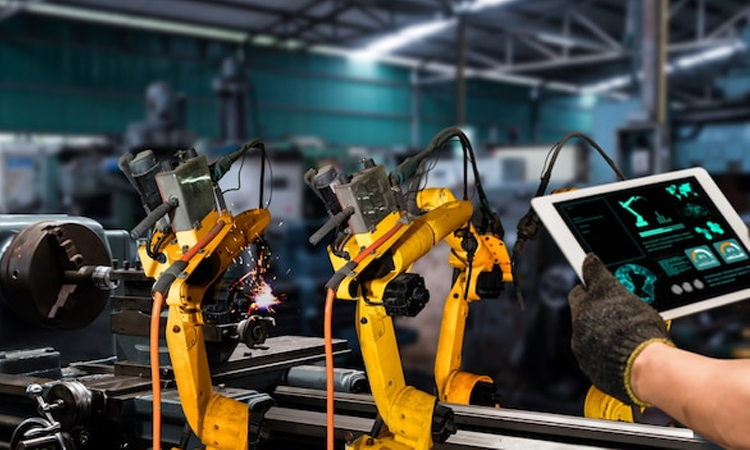The machine automation industry is experiencing a rapid transformation driven by advancements in technology, evolving customer needs, and the drive for greater efficiency in manufacturing. As industries worldwide embrace digitalization and the rise of smart manufacturing, automation continues to be at the heart of these changes. Here are the key future trends shaping the machine automation industry.
Integration of Industry 4.0 and Smart Manufacturing
Industry 4.0, the fourth industrial revolution, is fundamentally changing the way manufacturing is done. This era is marked by the integration of cyber-physical systems, the Internet of Things (IoT), cloud computing, and big data analytics. These technologies are enabling the creation of “smart factories” where machines are interconnected and can communicate with each other to optimize production processes in real time. In the future, automation systems will be increasingly designed to leverage AI and machine learning algorithms, allowing machines to make decisions, optimize operations, and even predict maintenance needs autonomously.
Collaborative Robots (Cobots)
The rise of collaborative robots, or cobots, is one of the most significant trends in machine automation. Cobots are designed to work alongside humans in a shared workspace, providing flexibility and enhancing productivity. Unlike traditional industrial robots that are often isolated within safety cages, cobots are equipped with advanced sensors and safety features that allow them to work safely alongside human operators. These robots can perform repetitive, dangerous, or ergonomically challenging tasks, freeing up human workers to focus on higher-value activities. As cobot technology advances, we can expect to see more widespread adoption across various industries, from automotive and electronics to food processing and pharmaceuticals.
Artificial Intelligence and Machine Learning
Artificial Intelligence (AI) and machine learning (ML) are set to play an increasingly critical role in machine automation. These technologies enable machines to learn from data, adapt to new scenarios, and improve their performance over time. AI-powered systems in machine automation can identify inefficiencies in the production process, predict when maintenance is required, and even optimize the use of resources like energy and raw materials. As AI and ML algorithms continue to evolve, they will provide manufacturers with more precise control over their operations and offer new levels of operational intelligence, leading to smarter, more autonomous manufacturing systems.
IoT-Enabled Automation and Real-Time Data
The integration of the Internet of Things (IoT) in machine automation is another transformative trend. By embedding sensors and connectivity into machines, manufacturers can gather real-time data from their equipment and production lines. This data provides valuable insights into the performance and condition of machines, allowing operators to monitor processes remotely and make adjustments as needed. IoT-enabled automation also helps in predictive maintenance, as sensors can detect anomalies or signs of wear before they lead to costly breakdowns. The future of machine automation will see a further proliferation of IoT technologies, with increased connectivity across devices, machines, and supply chains, making real-time data an integral part of decision-making.
Additive Manufacturing Integration
Additive manufacturing, or 3D printing, is increasingly being integrated into machine automation systems. As industries move toward more customized and complex products, 3D printing allows manufacturers to rapidly produce prototypes and even end-use parts. The combination of automation and additive manufacturing enables seamless production from design to final product, reducing the need for traditional tooling and significantly decreasing lead times. In the future, we can expect to see greater integration of 3D printing capabilities within automated production lines, allowing for greater flexibility and innovation in product development.
Edge Computing for Real-Time Decision-Making
With the massive amount of data generated by IoT devices and automation systems, edge computing is becoming increasingly important. Edge computing involves processing data closer to the source of generation, rather than relying solely on centralized cloud systems. This allows for faster decision-making and reduces latency, which is crucial in high-speed, time-sensitive manufacturing environments. By enabling real-time analysis and decision-making at the edge, manufacturers can respond more quickly to changing conditions on the factory floor, optimizing production processes and enhancing overall efficiency.
Sustainability and Energy Efficiency
As environmental concerns continue to grow, sustainability is becoming a critical consideration in the machine automation industry. Automation technologies are increasingly being designed with energy efficiency and waste reduction in mind. The ability to monitor and control energy usage in real-time, optimize machine performance, and reduce material waste is a key driver of future automation trends. Additionally, automation systems will play a central role in enabling the circular economy, where products and materials are reused, repaired, and recycled, reducing the overall environmental impact of manufacturing.
The machine automation industry is evolving rapidly, driven by technological advancements in AI, IoT, and robotics. The future of automation is not only about improving productivity and reducing costs but also about enabling smarter, more sustainable, and flexible manufacturing processes. As these trends continue to shape the industry, manufacturers will need to embrace innovation and adapt to the changing landscape to stay competitive and meet the demands of the future.
Image courtesy : Design by Freepik



